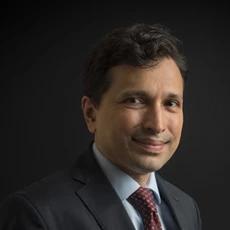-
Our Products
Our FundsOur High Return Funds
-
Self Care
Self-ServiceFind InformationWays To TransactPartner Solutions
-
Downloads
- Learnings
- About Us
-
More
-
Shareholders
-
Shareholders
-
Updates
-
-
Wealth Calculator
- Back
-
Shareholders
ABC Solution 

Loans
Insurance
Aditya Birla Sun Life AMC Limited
Aditya Birla Sun Life AMC Limited
Enter your details to visit our Metaverse

Enter valid first name
Enter valid last name
Enter valid email
+91
Enter valid mobile number
Enter valid otp detail
Select internet speed
Select privacy policy
Form Error
- Personal
-
Corporates
-
-
Advisors
-
Protecting
Financing
Advising
-
- Careers
- Mutual funds
-
Our Products
-
Our Funds
- All Funds
- Our Unique Solutions
- Our High Return Funds
- Aditya Birla Sun Life PSU Equity Fund
- Aditya Birla Sun Life Nifty Smallcap 50 Index Fund
- Aditya Birla Sun Life Pure Value Fund
- Aditya Birla Sun Life Infrastructure Fund
- Aditya Birla Sun Life Pharma and Healthcare Fund
- Aditya Birla Sun Life Small Cap Fund
- Aditya Birla Sun Life Midcap Fund
-
Solutions & Categories
-
-
Self Care
-
Self-Service
-
Find Information
-
Ways To Transact
Contact Us
1-800-270-7000 within india | +91-080-45860777 outside india | care.mutualfunds@adityabirlacapital.com -
- Downloads
- Learnings
- About Us
- Calculator
- Shareholders
-
Our Products
-
Our Funds
- All Funds
- Our Unique Solutions
- Our High Return Funds
- Aditya Birla Sun Life PSU Equity Fund
- Aditya Birla Sun Life Nifty Smallcap 50 Index Fund
- Aditya Birla Sun Life Pure Value Fund
- Aditya Birla Sun Life Infrastructure Fund
- Aditya Birla Sun Life Pharma and Healthcare Fund
- Aditya Birla Sun Life Small Cap Fund
- Aditya Birla Sun Life Midcap Fund
-
Solutions & Categories
-
-
Self Care
-
Self-Service
-
Find Information
-
Ways To Transact
Contact Us
-
-
Downloads
-
Learnings
-
About Us
-
Calculator
- Shareholders
Aditya Birla Sun Life AMC Limited
Do you know the difference between Thematic Funds and Sectoral Funds
Oct 14, 2017
4 mins | Views 38
Most people invest in mutual funds to seek potential returns at relatively low risk. However, this is not the case for all mutual funds. Thematic Funds and Sectoral Funds are two such funds that carry much higher risks compared to others. Is this the first time you’re hearing about these? Let’s dig deeper.
Sectoral funds
As the name suggests, a sectoral fund is a type of mutual fund that aims to completely invest in a few specific sectors of the economy. This can be energy, information technology (IT), banking, FMCG, and so on.
Many businesses follow a cyclical pattern of ups and downs. While some sectors perform well, others falter during the same period. The main aim of these funds is to benefit from sectors that are performing well based on the investment objective of the scheme.
Aditya Birla Sun Life Banking and Financial Services Fund is an open-ended Banking & Financial Services Sector Fund is an example of a sectoral fund. This fund invests predominantly in equity and equity related securities of companies engaged in banking and financial services.
Aditya Birla Sun Life Banking and Financial Services Fund
(An Open-ended Banking & Financial Services Scheme)
This product is suitable for investors who are seeking*:
- long term capital growth
- investment predominantly in equity and equity related securities as well as debt and money market instruments
*Investors should consult their financial advisers if in doubt about whether the product is suitable for them.
Thematic funds
You can think of these as a fund which invests in a particular theme rather than sector– there are various investments but they all have a common theme. In other words, investments are made in stocks of different sectors based on a particular theme. Thus, investments made in thematic funds are broader and offers more diversification than sectoral funds. For example, Aditya Birla Sun Life Infrastructure Fund is an open-ended growth scheme which is a thematic fund based around the theme of infrastructure.
Aditya Birla Sun Life Infrastructure Fund
(An Open Ended Growth Scheme)
This product is suitable for investors who are seeking*:
- long term capital growth
- investments in equity and equity related securities of companies that are participating in the growth and development of Infrastructure in India
*Investors should consult their financial advisers if in doubt about whether the product is suitable for them.
The fund invests predominantly in equity and equity related securities of companies related to growth and development of infrastructure in India. These companies could be in different sectors such as housing, cement, or construction. You can consider thematic funds to be an extension of sectoral funds.
Click here to check - What is thematic investing?
Okay, what’s so special about these funds?
Sectoral funds are very attractive to some investors because they are capable of generating long term capital appreciation. Over the past decade, the CAGR (Compound Annual Growth Rate) return on mid and small-cap funds was 15%. In comparison, sectoral funds focusing on banking and FMCG delivered returns up to 18%.
So, what’s the risk?
Despite such capital appreciation, many investors hesitate to invest in sectoral funds. This is due to the risk that is inherently associated with these funds.
Since a sectoral fund invests heavily in only one or two sectors, the entire performance of the fund depends on the performance of these sectors. The fund offers potential results if the sector performs well. However, it can also take a big plunge if the sector does poorly.
So, should you consider these funds?
Investing in a sectoral fund may be quite tricky. Both Sectoral and Thematic funds don’t give much option for diversification, former more than the latter. Though both options carry high risk, with more room for diversification, Thematic funds are relatively less risky of the two and might be a better option if you are a novice investor. It is best to dabble in them only if you have a firm knowledge of the sector and a big appetite for risk.
The bottom line
Both these funds do expose an investor’s portfolio to a higher degree of risk compared to other schemes. However, this doesn’t mean that you are automatically staring at a loss by investing. If you understand the sector thoroughly and keep yourself updated with the business cycles in the sector, it is possible to enjoy potential returns on your investments.
Mutual Fund investments are subject to market risks, read all scheme related documents carefully.
Rate this
Rate this Article
Similar Articles

 Our Experts
Our Experts
 Tools and Calculator
Tools and Calculator
 RSS News Feed
RSS News Feed
 Archives
Archives
Close
Hover to Zoom




 1800-270-7000
1800-270-7000












Thank You
Message will change according to your requirement.